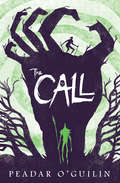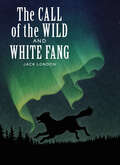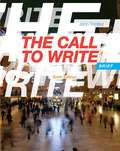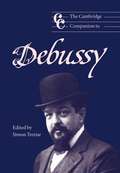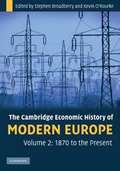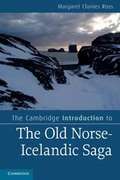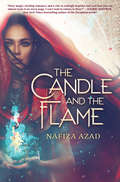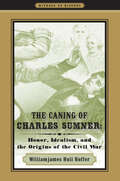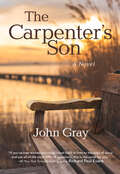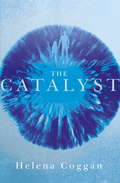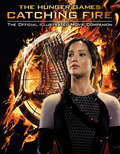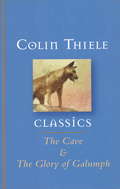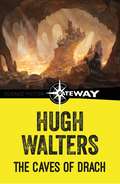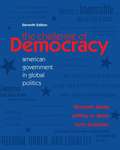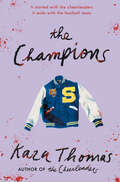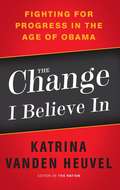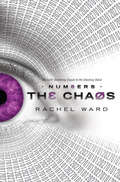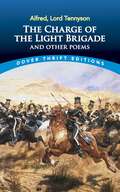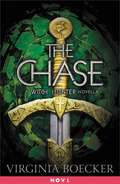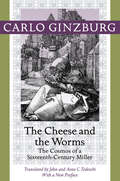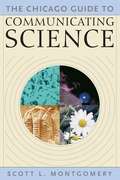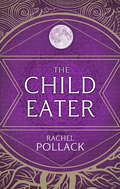- Table View
- List View
The Call
by Peadar O'GuilinYou have three minutes to save your life . . .THREE MINUTESYou wake up alone in a horrible land. A horn sounds. The Call has begun.TWO MINUTESThe Sidhe are close. They're the most beautiful and terrible people you've ever seen. And they've seen you.ONE MINUTENessa will be Called soon. No one thinks she has any chance to survive. But she's determined to prove them wrong. TIME'S UPCould you survive the Call?A genre-changing blend of fantasy, horror, and folkore, The Call will never leave your mind from the moment you choose to answer it.
The Call of the Wild and White Fang (Union Square Kids Unabridged Classics)
by Jack LondonThe illustrations for this series were created by Scott McKowen, who, with his wife Christina Poddubiuk, operates Punch & Judy Inc., a company specializing in design and illustration for theater and performing arts. Their projects often involve research into the visual aspects of historical settings and characters. Christina is a theater set and costume designer and contributed advice on the period clothing for the illustrations.Scott created these drawings in scratchboard an engraving medium which evokes the look of popular art from the period of these stories. Scratchboard is an illustration board with a specifically prepared surface of hard white chalk. A thin layer of black ink is rolled over the surface, and lines are drawn by hand with a sharp knife by scraping through the ink layer to expose the white surface underneath. The finished drawings are then scanned and the color is added digitally.Two of Jack London’s best-loved masterpieces, in their entirety. Call of the Wild tells a compelling tale of adventure during the Yukon Gold Rush, and fully captures the unquenchable spirit of Buck, a kidnapped dog trying to survive in the harshest of environments. Also set in Alaska, the powerful White Fang follows the often savage life of the magnificent title character, a mix of wolf and dog.
The Call to Write (Brief Sixth Edition)
by John TrimburThe brief sixth edition of THE CALL TO WRITE continues and expandes its creative approach to college composition. Organized by genres, including letters, memoirs, profiles, reports, commentaries, proposals, and reviews, and including new chapters on the essay and on multigenre writing, this innovative rhetoric gives students the practice they need to write in college and in the public sphere. Timely, provocative readings promote social engagement, encouraging students to become involved, through public writing, in their community and in the greater world around them.
The Cambridge Companion to Debussy
by Simon TreziseOften considered the father of twentieth-century music, Debussy was a visionary whose influence is still felt. This Companion offers new insights into Debussy's character, his environment and his music, including challenging views of the roles of nature and eroticism in his life and music. While works in all genres are discussed, they are considered through the themes of sonority, rhythm, tonality and form, with closing chapters considering the performance and reception of his music in the first years of the new century.
The Cambridge Companion to Hobbes
by Tom SorellWritten by scholars from five countries, this study discusses Hobbes' view of the nature of history and the works of history written by him.
The Cambridge Economic History of Modern Europe, Volume 2: 1870 to the Present
by Kevin H. O'Rourke Stephen BroadberryUnlike most existing textbooks on the economic history of modern Europe, which offer a country-by-country approach, The Cambridge Economic History of Modern Europe rethinks Europe's economic history since 1700 as unified and pan-European, with the material organized by topic rather than by country. This second volume tracks Europe's economic history through three major phases since 1870. The first phase was an age of globalization and of European economic and political dominance that lasted until the First World War. The second, from 1914 to 1945, was one of war, deglobalization, and depression and the third was one of growing integration not only within Europe but also between Europe and the global economy. Leading authors offer comprehensive and accessible introductions to these patterns of globalization and deglobalization as well as to key themes in modern economic history such as economic growth, business cycles, sectoral developments, and population and living standards.
The Cambridge Introduction to Postmodern Fiction
by Bran NicolPostmodern fiction presents a challenge to the reader: instead of enjoying it passively, the reader has to work to understand its meanings, to think about what fiction is, and to question their own responses. Yet this very challenge makes postmodern writing so much fun to read and rewarding to study. Unlike most introductions to postmodernism and fiction, this book places the emphasis on literature rather than theory. It introduces the most prominent British and American novelists associated with postmodernism, from the 'pioneers', Beckett, Borges and Burroughs, to important post-war writers such as Pynchon, Carter, Atwood, Morrison, Gibson, Auster, DeLillo, and Ellis. Designed for students and clearly written, this Introduction explains the preoccupations, styles and techniques that unite postmodern authors. Their work is characterized by a self-reflexive acknowledgement of its status as fiction, and by the various ways in which it challenges readers to question common-sense and commonplace assumptions about literature.
The Cambridge Introduction to the Old Norse-Icelandic Saga
by Margaret Clunies RossThe medieval Norse-Icelandic saga is one of the most important European vernacular literary genres of the Middle Ages. This Introduction to the saga genre outlines its origins and development, its literary character, its material existence in manuscripts and printed editions, and its changing reception from the Middle Ages to the present time. Its multiple sub-genres - including family sagas, mythical-heroic sagas and sagas of knights - are described and discussed in detail, and the world of medieval Icelanders is powerfully evoked. The first general study of the Old Norse-Icelandic saga to be written in English for some decades, the Introduction is based on up-to-date scholarship and engages with current debates in the field. With suggestions for further reading, detailed information about the Icelandic literary canon, and a map of medieval Iceland, this book is aimed at students of medieval literature and assumes no prior knowledge of Scandinavian languages.
The Candle and the Flame
by Nafiza AzadAzad's debut YA fantasy is set in a city along the Silk Road that is a refuge for those of all faiths, where a young woman is threatened by the war between two clans of powerful djinn.Fatima lives in the city of Noor, a thriving stop along the Silk Road. There the music of myriad languages fills the air, and people of all faiths weave their lives together. However, the city bears scars of its recent past, when the chaotic tribe of Shayateen djinn slaughtered its entire population -- except for Fatima and two other humans. Now ruled by a new maharajah, Noor is protected from the Shayateen by the Ifrit, djinn of order and reason, and by their commander, Zulfikar.But when one of the most potent of the Ifrit dies, Fatima is changed in ways she cannot fathom, ways that scare even those who love her. Oud in hand, Fatima is drawn into the intrigues of the maharajah and his sister, the affairs of Zulfikar and the djinn, and the dangers of a magical battlefield.In this William C. Morris YA Debut Award finalist novel, Nafiza Azad weaves an immersive tale of magic and the importance of names; fiercely independent women; and, perhaps most importantly, the work for harmony within a city of a thousand cultures and cadences.
The Caning of Charles Sumner: Honor, Idealism, and the Origins of the Civil War (Witness to History)
by Williamjames Hull HofferA signal, violent event in the history of the United States Congress, the caning of Charles Sumner on the Senate floor embodied the complex North-South cultural divide of the mid-nineteenth century. Williamjames Hull Hoffer's vivid account of the brutal act demonstrates just how far the sections had drifted apart and explains why the coming war was so difficult to avoid. Sumner, a noted abolitionist and gifted speaker, was seated at his Senate desk on May 22, 1856, when Democratic Congressman Preston S. Brooks approached, pulled out a gutta-percha walking stick, and struck him on the head. Brooks continued to beat the stunned Sumner, forcing him to the ground and repeatedly striking him even as the cane shattered. He then pursued the bloodied, staggering Republican senator up the Senate aisle until Sumner collapsed at the feet of Congressman Edwin B. Morgan. Colleagues of the two intervened only after Brooks appeared intent on beating the unconscious Sumner severely—and, perhaps, to death. Sumner's crime? Speaking passionately about the evils of slavery, which dishonored both the South and Brooks’s relative, Senator Andrew P. Butler. Celebrated in the South for the act, Brooks was fined only three hundred dollars, dying a year later of a throat infection. Sumner recovered and served out a distinguished Senate career until his death in 1873.Hoffer's narrative recounts the caning and its aftermath, explores the depths of the differences between free and slave states in 1856, and explains the workings of the Southern honor culture as opposed to Yankee idealism. Hoffer helps us understand why Brooks would take such great offense at a political speech and why he chose a cane—instead of dueling with pistols or swords—to meet his obligation under the South’s prevailing code of honor. He discusses why the courts meted out a comparatively light sentence. He addresses the importance of the event in the national crisis and shows why such actions are not quite as alien to today’s politics as they might at first seem.
The Carpenter's Son: A Novel
by John Gray"If you've ever wished you could travel back in time to the days of Jesus and ask all of the most difficult questions, this is the novel for you. The Carpenter's Son brings Christ into our modern world and will fill the reader with love, hope and faith in, not just God, but a better world."—#1 New York Times bestselling author Richard Paul Evans Brooklyn Sterling was enjoying a crisp autumn day of apple-picking with her daughter Evi, and husband Conner when the tree they were climbing suddenly cracks, and mother and daughter are thrown violently to the ground. Across the city, Jayden hops on his bicycle heading home for hot pancakes after a morning of fishing. Noone saw the car that crashed into him, mangling his bike, and throwing his tiny body twenty feet into the air. Two lives are miraculously saved, and a mysterious stranger is witness to them both. Other supposed "miracles" are being reported around the city, and Brooklyn, an avowed atheist and award-winning journalist for the Boston Globe, is determined to expose the fraud and reveal the truth. What happens next opens Brooklyn's eyes to a truth too bright to be denied, showing her that we are never alone on this journey, especially in the darkest of times.
The Catalyst: Book One in the heart-stopping Wars of Angels duology (The\war Of Angels Ser.)
by Helena Coggan'The next JK Rowling' (Today Programme, USA)'An astounding achievement. I can't wait for the second book! *****' - Reader Review'A great read for those who enjoyed The Hunger Games and Divergent. *****' - Reader Review____________________Rose Elmsworth has a secret.For eighteen years, the world has been divided into the magically Gifted and the non-magical Ashkind, but Rose's identity is far more dangerous. At fifteen, she has earned herself a place alongside her father in the Department, a brutal law-enforcement organisation run by the Gifted to control the Ashkind. But now an old enemy is threatening to start a catastrophic war, and Rose faces a challenging test of her loyalties.How much does she really know about her father's past? How far is the Department willing to go to keep the peace? And, if the time comes, will Rose choose to protect her secret, or the people she loves?____________________Further praise for Helena Coggan and The Catalyst'The Catalyst is a complicated, rich world of magic and danger . . . Both fantastical and startlingly relevant and contemporary, it's tense, exciting, engaging and has at its heart a central character whose incredibly personal story becomes caught up in huge battles and some even bigger ideas.' - Claire North, author of The First Fifteen Lives of Harry August'A pulsing, labyrinthine, emotionally visceral plot' - Metro'A phenomenal achievement . . . assured, frightening, action-packed' - Observer
The Catching Fire: The Official Illustrated Movie Companion (The\Hunger Games Ser. #2)
by Kate EganCatching Fire, the New York Times bestseller by Suzanne Collins, is now a major motion picture -- and this is your guide to all of the movie's excitement, both in front of the camera and behind it.Go behind the scenes of the making of Catching Fire with exclusive materials, including back-stage photos and interviews. From the screenwriting process to the casting decisions, from the fantastic new sets and gorgeous costumes to the actors' performances and the director's vision, this is the definitive companion to the second Hunger Games film.
The Cave and The Glory of Galumph
by Robert Ingpen Colin ThieleTwo classic short stories from Colin Thiele.The CaveJenny and Tom would never have found the cave if it hadn?t been for the big storm. Yet within twenty-four hours they both wish they had never set eyes on it ? or ventured inside!The Glory of GalumphWhen poor old clumsy Galumph is sent to a farm while his family is on holiday, he is soon in disgrace for chasing the cattle and disrupting the sheepdog trials. When, however, fire threatens the farmhouse, the intrepid canine finally has his moment of glory.COLIN THIELE, AC, was one of Australia?s most distinguished and popular writers for children. Colin's books have won numerous Australian and international awards and have been made into many classic films, TV series, plays and picture books. His bestsellers include the multi-award-winning STORM BOY and BLUE FIN.
The Caves of Drach
by Hugh WaltersChris Godfrey, the famous astronaut, is on holiday in Majorca with his friends Morrey, Serge and Tony. They visit the fabulous underground Caves of Drachm and there they encounter Ebenezer Yates, an elderly and wealthy American who is greatly distressed because his grandson Ian has just disappeared. There is one cavern to which no one is admitted; armed soldiers guard its entrance, but Mr Yates knows that Ian was fascinated by this forbidden cave and he is sure that the boy has slipped in while the lights were switched off. The cavern is regarded with such terror that no one will talk about it, but Mr Yates finally discovers that before it was kept guarded a number of people had entered and none had ever returned. Nonetheless, the astronauts are determined to find Ian no matter what the danger...
The Challenge of Democracy: American Government in Global Politics (11th Edition)
by Jeffrey M. Berry Jerry Goldman Kenneth JandaThe Eleventh Edition of THE CHALLENGE OF DEMOCRACY continues to bring students the very latest research and events central to the field of American government by using a highly acclaimed, non-ideological framework to explore the theme of freedom, order, and equality.
The Champions (The Cheerleaders)
by Kara ThomasFrom the author of The Cheerleaders comes another dark YA thriller set in the same town of Sunnybrook. When a mysterious accident befalls a member of the all-star high school football team, the town's deadly history stands to repeat itself—and the price of discovering the truth is higher than anyone could imagine.It was the deaths of five cheerleaders that made the town of Sunnybrook infamous. Eleven years later, the girls' killer has been brought to justice, and the town just wants to move on. By the time Hadley moves to Sunnybrook, though, the locals are more interested in the Tigers, the high school's championship-winning football team. The Tigers are Sunnybrook&’s homegrown heroes--something positive in a town with so much darkness in its past.Hadley could care less about football, but shortly after she gets assigned to cover the team's latest championship bid for the school newspaper, one of the Tigers is poisoned at a party, and almost immediately after, Hadley starts getting strange emails warning her to stay far away from the football team.It's becoming clear Sunnybrook's golden boys have secrets, and after a second player is mysteriously killed, Hadley&’s beginning to suspect that someone wants the team to pay for their sins. Or does this new target on the football team have something to do with what happened to the cheerleaders all those years ago?As an outsider in Sunnybrook, Hadley feels like she's the only one who can see the present clearly, but it looks like she&’s going to have to dig up the darkness of the past to get to the bottom of what&’s happening now. Luckily, there are still some Sunnybrook High grads who never left--people who were around eleven years ago—and if she can just convince them to talk, she might be able stop a killer before another Tiger dies.
The Change I Believe In: Fighting for Progress in the Age of Obama
by Katrina Vanden HeuvelOn the night of the 2008 presidential election,Nationeditor Katrina vanden Heuvel spoke for many: "For the first time in decades, electoral politics became a vehicle for raising expectations and spreading hope. ” But, she cautioned, "We progressives need to be as clear-eyed, tough, and pragmatic about Obama as he is about us. ” Where I Standcollects vanden Heuvel’s commentaries and columns from the first years of the Obama administration, an era that has come to be defined by reform and reaction. In the wake of the economic crisis and challenges from the insurgent Tea Party movement, it is clear that it will take more than one election (and one person) to reshape American politics and repair the damage wreaked by a decade of calamitous conservative rule. Vanden Heuvel challenges the limits of our downsized political debate, arguing that timid incrementalism and the forces of money and establishment power that debilitate American politics will be overcome only by independent organizing, strategic creativity, bold ideas, and determined idealism.
The Chaos: The Chaos (Numbers #2)
by Rachel WardThe curse of the NUM8ERS continues in Rachel Ward's CHA0T1C, earth-shattering sequel!Adam has more than inherited his mother's curse: When he looks in someone's eyes, he not only sees the date of their death...he feels the searing, shocking pain of it. Since Jem died, Adam has lived by the sea with his great-grandmother, Val. But when rising tides flood the coast, they return to London. The city is an alien, exciting, frightening place. Most disturbing of all, Adam can't help but clock how many people's numbers are in January 2027; how many are on New Year's Day. What chaos awaits the world? Can he and Sarah stop a catastrophe? Or are they, too, counted among the "twenty-sevens"?
The Charge of the Light Brigade and Other Poems: And Other Poems (Dover Thrift Editions: Poetry)
by Alfred, Lord TennysonConsidered by Victorians as the finest contemporary poet, Alfred, Lord Tennyson (1809–1892) gained much critical favor for his mastery of poetic technique, high-mindedness, and superb natural description. This volume contains a representative selection of his best works, including the famous long narrative poem "Enoch Arden," as well as a number of important lyrics, monologues, ballads, and other typical pieces. Among these are "The Lady of Shalott," "The Beggar Maid," "The Charge of the Light Brigade," "Break, break, break," "Flower in the Crannied Wall," and "Ode on the Death of the Duke of Wellington." Also here are carefully chosen, uncut excerpts from three longer works: The Princess, "Maud," and "The Brook." With this inexpensive volume at their fingertips, students and lovers of poetry can enjoy a substantial sampling of Tennyson's still-admired, widely quoted verse.
The Chase: A Witch Hunter Novella (The Witch Hunter)
by Virginia BoeckerA witch and a revenant. One full of life, the other technically dead. Fifer and Schuyler's relationship is nothing if not unusual. Some might even call it ill-advised. But try as they might to push each other away, something keeps bringing them back together.Then a force stronger than their attraction comes between them: Lord Blackwell, the Inquisitor and most powerful man in Anglia. He sends Schuyler on a mission--a mythical sword, rumored to make its owner invincible, lies somewhere in Anglia and it's Schuyler's job to find it.Meanwhile, left behind in Harrow with her studies, Fifer can't help but worry what's become of her undead paramour. Schuyler's been missing for weeks and Fifer may be the one who can--or who cares enough to--find him.An enthralling new Witch Hunter series novella. Word Count: ~19,000
The Cheese and the Worms: The Cosmos of a Sixteenth-Century Miller
by Carlo GinzburgThe now-classic tale of a sixteenth-century miller facing the Roman Inquisition.The Cheese and the Worms is an incisive study of popular culture in the sixteenth century as seen through the eyes of one man, the miller known as Menocchio, who was accused of heresy during the Inquisition and sentenced to death. Carlo Ginzburg uses the trial records to illustrate the religious and social conflicts of the society Menocchio lived in. For a common miller, Menocchio was surprisingly literate. In his trial testimony he made references to more than a dozen books, including the Bible, Boccaccio's Decameron, Mandeville's Travels, and a "mysterious" book that may have been the Koran. And what he read he recast in terms familiar to him, as in his own version of the creation: "All was chaos, that is earth, air, water, and fire were mixed together; and of that bulk a mass formed—just as cheese is made out of milk—and worms appeared in it, and these were the angels."Ginzburg’s influential book has been widely regarded as an early example of the analytic, case-oriented approach known as microhistory. In a thoughtful new preface, Ginzburg offers his own corollary to Menocchio’s story as he considers the discrepancy between the intentions of the writer and what gets written. The Italian miller’s story and Ginzburg’s work continue to resonate with modern readers because they focus on how oral and written culture are inextricably linked. Menocchio’s 500-year-old challenge to authority remains evocative and vital today.
The Chicago Guide to Communicating Science
by Scott L. MontgomeryThis book offers detailed, practical advice on crafting every sort of scientific communication, from research papers and conference talks to review articles, interviews with the media, e-mail messages, and more.
The Chicago Guide to Writing about Numbers
by Jane E. MillerPeople who work well with numbers are often stymied by how to write about them. Those who don't often work with numbers have an even tougher time trying to put them into words. For instance, scientists and policy analysts learn to calculate and interpret numbers, but not how to explain them to a general audience. Students learn about gathering data and using statistical techniques, but not how to write about their results. And readers struggling to make sense of numerical information are often left confused by poor explanations. Many books elucidate the art of writing, but books on writing about numbers are nonexistent. Until now. Here, Jane Miller, an experienced research methods and statistics teacher, gives writers the assistance they need. The Chicago Guide to Writing about Numbers helps bridge the gap between good quantitative analysis and good expository writing. Field-tested with students and professionals alike, this book shows writers how to think about numbers during the writing process. Miller begins with twelve principles that lay the foundation for good writing about numbers. Conveyed with real-world examples, these principles help writers assess and evaluate the best strategy for representing numbers. She next discusses the fundamental tools for presenting numbers--tables, charts, examples, and analogies--and shows how to use these tools within the framework of the twelve principles to organize and write a complete paper. By providing basic guidelines for successfully using numbers in prose, The Chicago Guide to Writing about Numbers will help writers of all kinds clearly and effectively tell a story with numbers as evidence. Readers and writers everywhere will be grateful for this much-needed mentor.
The Child Eater
by Rachel PollackAn ancient evil is on the rise. Children are disappearing. Only two boys, from different worlds, can stop it.On Earth, The Wisdom family has always striven to be more normal than normal. But Simon Wisdom, the youngest child, is far from ordinary: he can see the souls of the dead. And now the ghosts of children are begging him to help them. Something is coming, something far, far worse than death . . .In a far-away land of magic and legends, Matyas is determined to drag himself up from the gutter, become a wizard and learn to fly. But he, too, can hear the children crying.Two vastly different worlds. One ancient evil. The child eater is coming . . .'An intricately imagined Tarot-themed fantasy' - Guardian*THIS EDITION CONTAINS BONUS MATERIAL*
